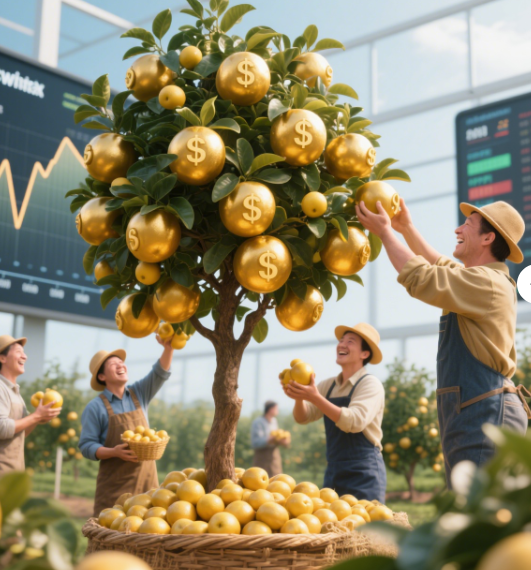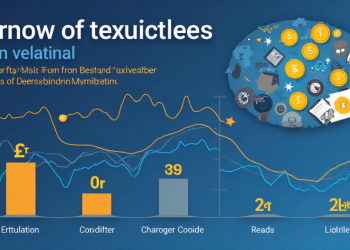What Is Dividend Yield and Why It Matters to Investors Today
In an increasingly volatile financial landscape, dividend yield has emerged as a key metric for investors seeking steady returns amidst market turbulence. Defined as the ratio of a company’s annual dividend payments to its stock price, dividend yield signals not only profitability but also a company’s commitment to rewarding shareholders. According to a 2024 report by J.P. Morgan Asset Management, high-yielding stocks have historically outperformed their lower-yield peers during periods of economic slowdown, suggesting yield-focused strategies may provide resilience in uncertain times.
For crypto-native and traditional investors alike, grasping the nuances of dividend yield can be the differentiator between passive speculation and informed wealth-building.
Decoding the Mechanics of Dividend Yield
At its core, the dividend yield formula is straightforward:
Dividend Yield = Annual Dividend per Share / Price per Share
However, interpreting it is more nuanced. A high dividend yield may signal a bargain — or a warning. For example, if a company’s stock price falls sharply due to poor performance while maintaining the same dividend payout, the yield will spike, potentially masking financial instability.
This phenomenon is known as a dividend yield trap, and it’s why investors are encouraged to analyze supporting financial indicators such as payout ratio, earnings growth, and free cash flow. A 2023 research paper published in the Journal of Financial Economics concluded that firms with high yield and low payout ratios consistently outperformed the market over a 10-year period.

Why Yield Matters More in a Rate-Sensitive Market
Amid a global interest rate tightening cycle led by the Federal Reserve and ECB, investors have increasingly turned to dividend-paying assets as bond alternatives. According to Morningstar Direct, U.S. equity dividend strategies saw net inflows of over $18 billion in Q1 2024, reflecting a shift in capital from growth to income-focused allocations.
The search term “high dividend yield stocks 2024” has seen a 40% YoY increase on Google, reflecting a growing appetite for income security. Investors are not just chasing yield—they’re seeking reliable, inflation-resistant cash flows.
High-quality dividend payers such as PepsiCo (PEP) and Johnson & Johnson (JNJ) have demonstrated consistent performance in times of both recession and expansion. In the cryptocurrency world, tokenized equities and staking models are beginning to mirror these yield dynamics, prompting platforms like Synthetix and Ondo Finance to explore dividend-style yield distribution.
Crypto and Dividend Yield: Bridging Traditional Finance and Web3
While crypto assets don’t pay dividends in the traditional sense, staking rewards, yield farming, and real-world asset (RWA) tokenization now provide parallel mechanisms. For example, Ethereum staking currently offers a yield of 3.5–4.2% annually, depending on the validator setup and protocol conditions (per Lido Finance analytics dashboard, May 2025).
The emergence of Dividend-yield tokens—a growing category within DeFi—allows investors to receive regular payouts based on underlying protocols’ revenues. A recent whitepaper by Messari outlines how protocols with real utility and strong cash flow (e.g., GMX and dYdX) have introduced reward mechanisms that simulate dividend-like behavior, giving crypto investors a taste of yield without relying on centralized corporate structures.
These innovations demonstrate how Web3 finance is converging with traditional investment logic, offering diversified income avenues in a digitally native format.
How to Evaluate Dividend Yield in Practice
To avoid falling into traps and maximize return potential, investors should consider:
- Sustainability of Payouts: Is the company’s (or protocol’s) cash flow strong enough to maintain or grow dividends?
- Sector Comparisons: Yields should be compared within industries. For instance, utilities generally offer higher yields than tech.
- Yield vs. Growth Balance: High yield may come at the expense of reinvestment. Balance is key.
Experts recommend a “core-satellite strategy”—holding high-yield anchors in a portfolio, complemented by growth assets for long-term compounding.
Final Thoughts
Dividend yield is far more than a simple percentage on a stock chart. It reflects a company’s financial discipline, market confidence, and long-term vision. In both traditional and emerging decentralized markets, yield-focused strategies offer investors a pathway toward consistent, inflation-adjusted income without abandoning growth potential.
As tokenized economies evolve and staking models mature, understanding the principles behind dividend yield will be critical for savvy participation in both equities and crypto markets.
Stay ahead of the curve with in-depth insights and updates from okhtx.
Author Bio:
Alex Tran is a financial markets strategist and blockchain analyst with over 10 years of experience in digital asset research and yield-optimization strategies. He frequently contributes to leading investment journals and specializes in bridging traditional equity insights with decentralized finance applications.

















